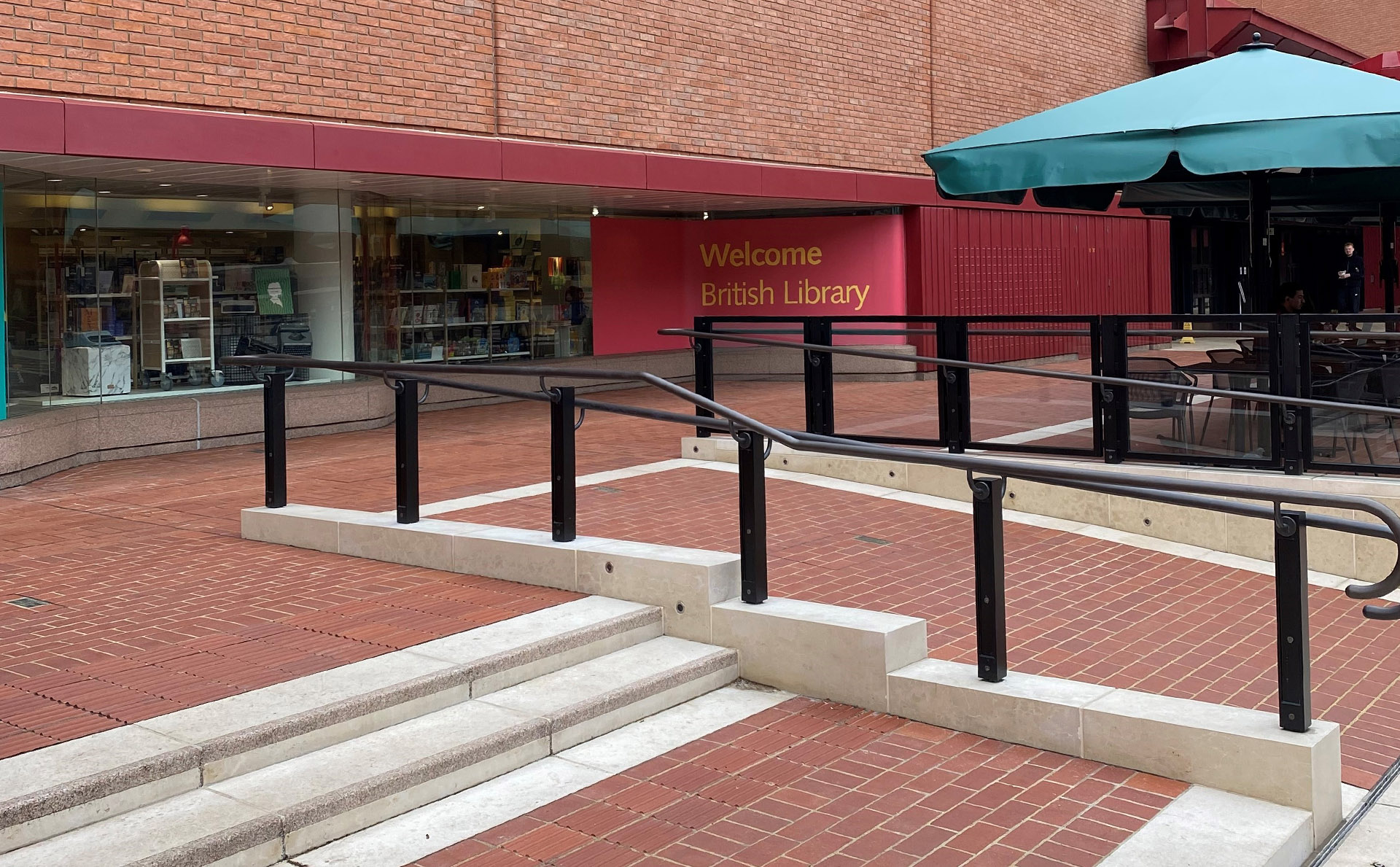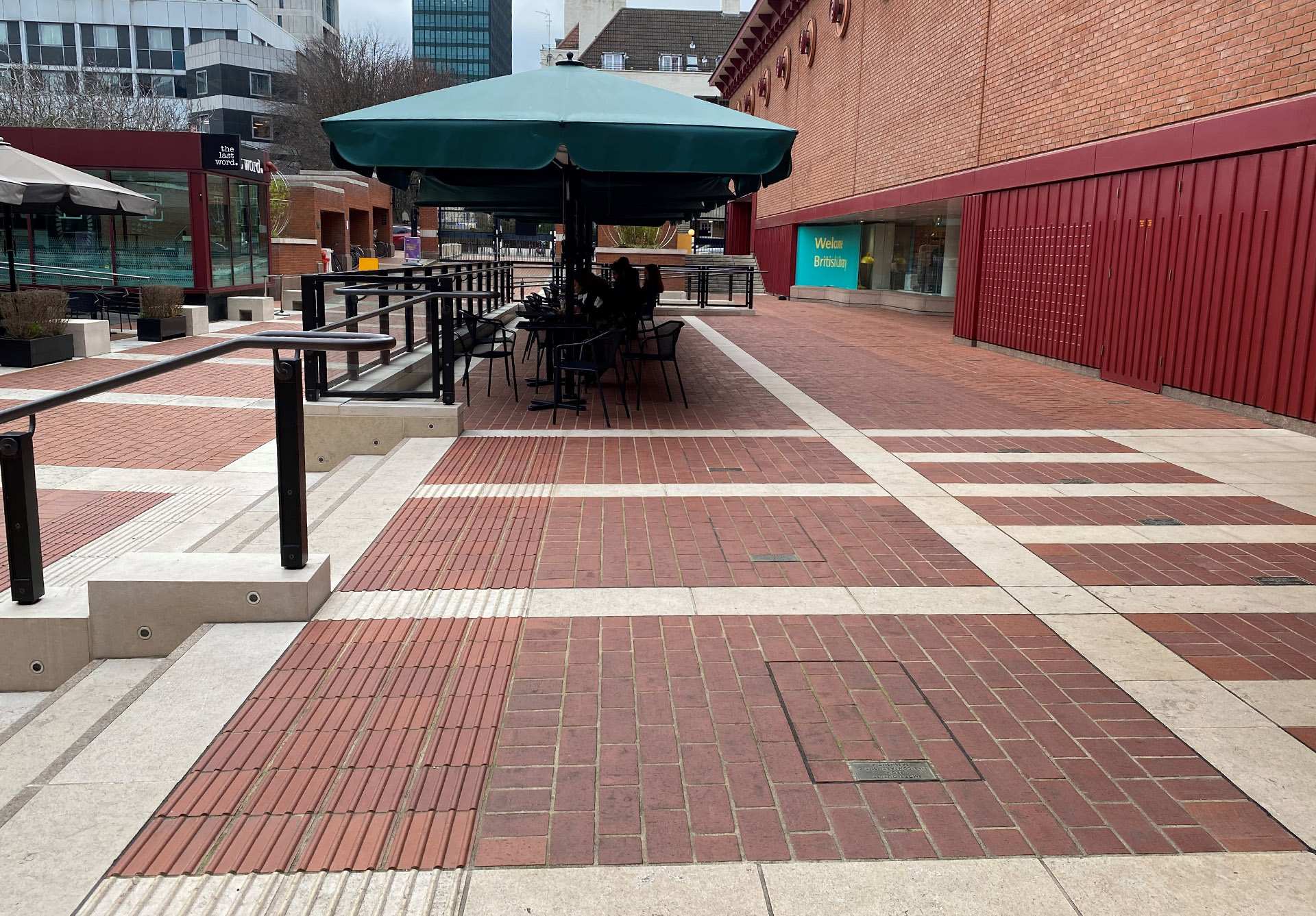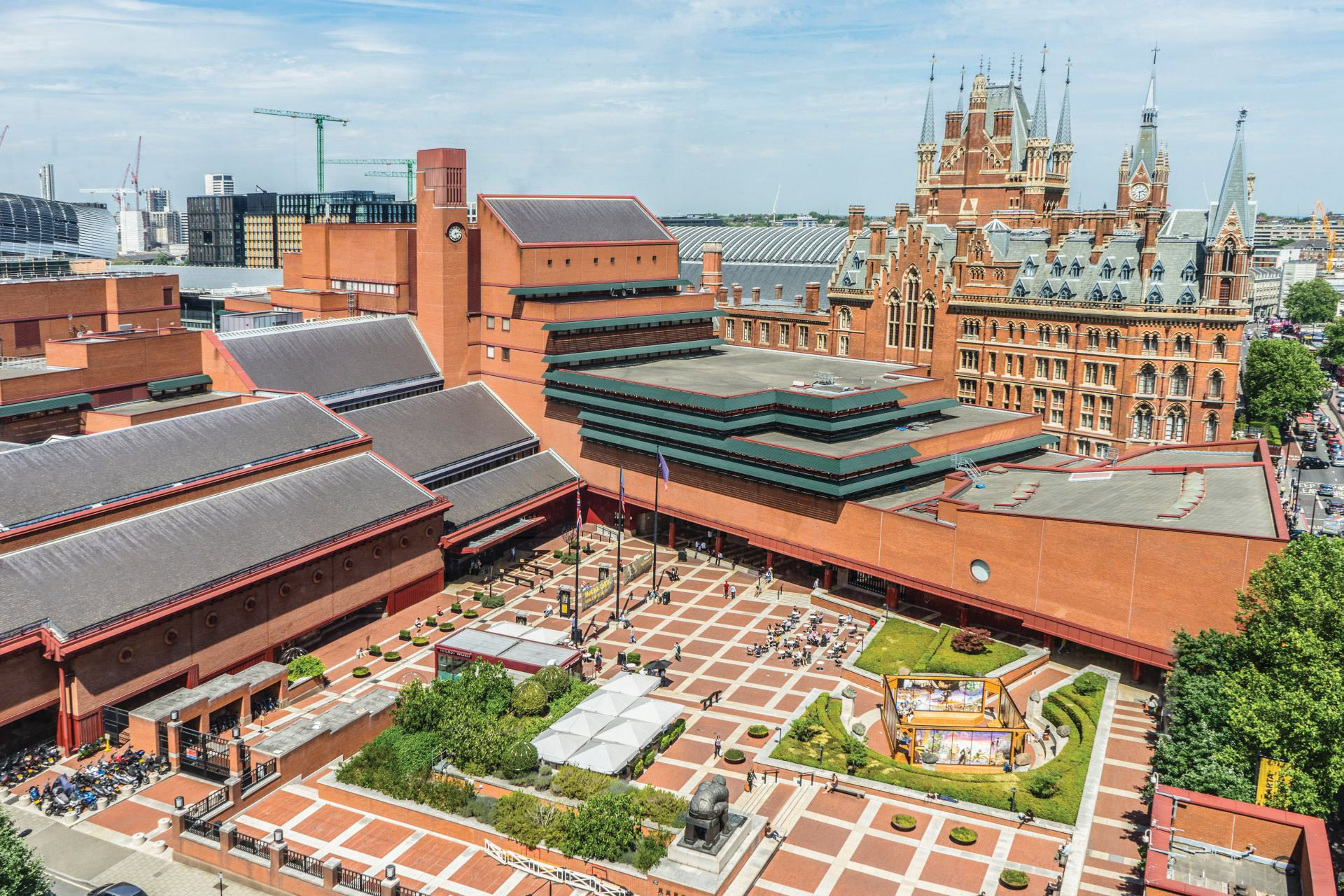British Library
Architect - Rolfe Kentish
Contractors - Paye Stonework and Restoration
Background
The Grade I listed British Library was built on the site of an old goods yard in St Pancras. Architects Sir Colin St John Wilson and MJ Long chose to construct it in red brick to blend it in with it’s large neighbours, St Pancras station and the Renaissance Hotel.
 Rolfe Kentish worked on the original library build project and he was recently appointed to undertake improvement works to the entrance of this iconic building. The southfacing Piazza is a large area, designed as an extension to the inside space, providing an outdoor area for people to meet, read and relax. The red clay pavers on the Piazza are similar in colour to the bricks of the main building, and it was important to use new clay pavers that would blend in with those already there. Ketley’s Staffordshire red pavers are a traditional red colour, and their natural variations in tone made them a good match. The architects redesigned the entrance using Ketley new square edged Staffordshire red pavers and incorporated new Hauteville stone plinths and steps, highlighted by bespoke red tactile pavers which needed to match the tactile pavers already in use. The project required a large number of bespoke plain paver sizes as well as a number of bespoke corduroy tactile pavers to tie it in seamlessly to the existing paved area. A dedicated die was purpose-made to match the existing corduroy pattern, and a number of different sized tactile pavers were extruded using this die. Some of the bespoke plain pavers, specially made to match in with the existing, were as large as 303mm long and others were as wide as 178mm. The results are so seamless, its hard to work out what changes have been made!
Rolfe Kentish worked on the original library build project and he was recently appointed to undertake improvement works to the entrance of this iconic building. The southfacing Piazza is a large area, designed as an extension to the inside space, providing an outdoor area for people to meet, read and relax. The red clay pavers on the Piazza are similar in colour to the bricks of the main building, and it was important to use new clay pavers that would blend in with those already there. Ketley’s Staffordshire red pavers are a traditional red colour, and their natural variations in tone made them a good match. The architects redesigned the entrance using Ketley new square edged Staffordshire red pavers and incorporated new Hauteville stone plinths and steps, highlighted by bespoke red tactile pavers which needed to match the tactile pavers already in use. The project required a large number of bespoke plain paver sizes as well as a number of bespoke corduroy tactile pavers to tie it in seamlessly to the existing paved area. A dedicated die was purpose-made to match the existing corduroy pattern, and a number of different sized tactile pavers were extruded using this die. Some of the bespoke plain pavers, specially made to match in with the existing, were as large as 303mm long and others were as wide as 178mm. The results are so seamless, its hard to work out what changes have been made!











